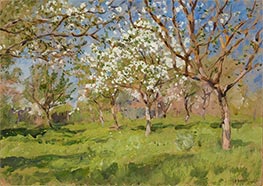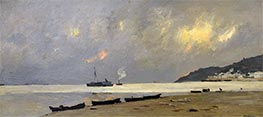
Isaac Ilyich Levitan Painting Reproductions 6 of 6
1860-1900
Russian Peredvizhniki Painter
122 Isaac Levitan Paintings

Blooming Apple Trees 1896
Oil Painting
$519
$519
Canvas Print
$61.76
$61.76
SKU: LEV-18512
Isaac Ilyich Levitan
Original Size: 18.5 x 25.8 cm
The Tretyakov Gallery, Moscow, Russia
Isaac Ilyich Levitan
Original Size: 18.5 x 25.8 cm
The Tretyakov Gallery, Moscow, Russia

Yuryevets. Cloudy Day on the Volga 1890s
Oil Painting
$513
$513
Canvas Print
$61.76
$61.76
SKU: LEV-18513
Isaac Ilyich Levitan
Original Size: 31 x 66 cm
Museum of History and Art, Serpukhov, Russia
Isaac Ilyich Levitan
Original Size: 31 x 66 cm
Museum of History and Art, Serpukhov, Russia